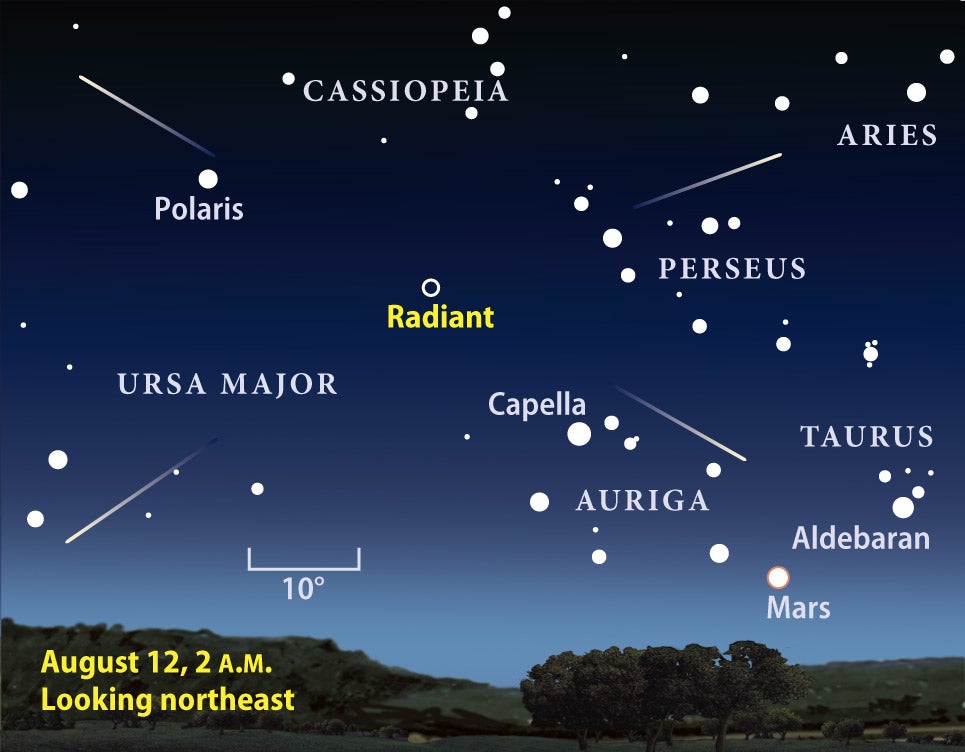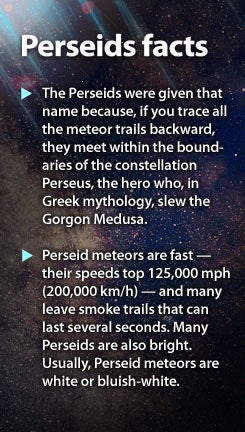Here it comes. The annual Perseid meteor shower is typically one of the best of the year. In 2009, this shower should look good but not great because it peaks as the Last Quarter Moon illuminates the sky. Still, you will see the brightest meteors easily, and you’ll also count quite a few faint shooting stars prior to moonrise. The Perseid meteor shower features bright, fast meteors, many of which leave smoke trails visible for several seconds.
Video: How to observe meteor showers
The Perseids’ peak (the best time to see the meteors) occurs between 1:30 P.M. and 4 P.M. EDT August 12. Last Quarter Moon occurs 23 hours later. But this year, the Perseids may exhibit a second peak somewhat earlier. Detailed models of the trail left in 1610 by the Perseids’ parent comet, 109P/Swift-Tuttle, show that a second peak may occur around 5 A.M. EDT August 12. If this peak materializes, its timing will favor observers in the western half of North America.
Astronomy magazine Senior Editor Richard Talcott thinks many viewers will make this a long night. “With the potential of two peaks for this year’s shower, observers will have something to look forward to even in the wee hours of the morning, and even with the Moon up in the sky.”
August 12 isn’t the only date you can observe Perseid meteors. This year, the shower will be active between about July 17 and August 24. Of course, you’ll see fewer meteors the farther you observe from the peak.
With the Moon out, you’ll need a clear, dark sky to see more than just a few Perseids. “Dark” means at least 40 miles from the lights of a large city. You won’t need a telescope – in fact, the eyes alone work best because they provide the widest field of view.
Early in the evening on Wednesday, August 12, set up a lawn chair, preferably one that reclines. Face east, and look halfway up. After midnight (around the time of moonrise), adjust your chair, and generally look overhead. Glancing around won’t hurt anything.
In addition to your chair, bring a blanket, bug spray, cookies, fruit, and a non-alcoholic beverage (alcohol interferes with the eye’s dark adaption as well as the visual perception of events).
How many Perseids will you see? This year, with a half-illuminated Moon in the sky, you can expect to count between 30 and 50 meteors per hour from a dark site.












